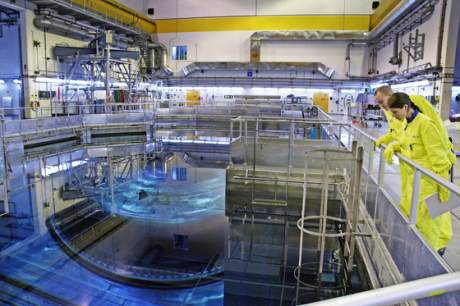Upgrade ultimatum for Swedish plants
10 October 2014
 |
| Inside Forsmark 3 during a operation. The plant will need significant upgrades to gain permission to operate until 2045 as currently planned (Image: Vattenfall) |
A round of safety improvements to ensure core cooling in scenarios similar to those of the accident at Fukushima Daiichi have been announced by the Swedish regulator, which unusually made its statement in a newspaper article.
Writing in the Dagen Nyheter newspaper, the heads of Sweden's radiation safety body SSM, announced a two-stage set of upgrades they want to see at the country's ten nuclear power reactors.
By 2017, they wrote, all reactors should have independent systems to ensure power and water are available for emergency cooling for a period of 72 hours. This is in common with post-Fukushima upgrades undertaken in many countries, and already in progress in Sweden under the power plant operators' own initiative. SSM said this requirement could be met by means such as mobile diesel generators and external water storage.
By 2020, SSM wants the plants to also have a "robust permanent installation that includes power supply and systems for pumping of water and an external water source independent of those used in existing emergency cooling systems." This is significantly more complicated, requiring engineering deep within the reactor building and potentially its primary coolant circuit.
If a power plant's owner does not meet the second requirement by 2020, "SSM will require that the companies take these units out of service within a reasonable time after 2020." The regulator noted this was the first time that it had connected intensified requirements with the potential closure of individual reactors.
Whether to make significant second set of upgrades will be an economic decision for Vattenfall, which operates the Ringhals and Forsmark nuclear power plants, and OKG, which owns Oskarshamn.
Oskarshamn 1 as well as Ringhals 1 and 2 are slated to close between 2022 and 2026, while the country's seven other units are expected to close between 2034 and 2045.
The public announcement follows many years of dialogue between SSM and the operators concerning diversification and improvement to core cooling in emergencies. SSM had been preparing to announce new requirements when the Fukushima accident of March 2011 made it revise its work.
Political shift
The unprecedented public announcement of tougher requirements in a newspaper article follows the formation of a coalition government including the Green Party. Åsa Romson of that party was made environment minister as well as deputy prime minister last week with a plan to make nuclear power "bear a greater share of its economic cost." She wants to raise the amount that nuclear generators pay to their joint-venture waste disposal company SKB from the current €0.24 cents per kWh. Nuclear power is already subject to a tax of €0.67 cents per kWh of electricity generated.
A separate attack on nuclear power by Greens has already seen state-owned Vattenfall told to scrap its plans to replace a retiring reactor at Ringhals. "Renewables will be Vattenfall's core business," said the state company's CEO Magnus Hall on 7 October as he visited a wind farm in Denmark.
Researched and written
by World Nuclear News